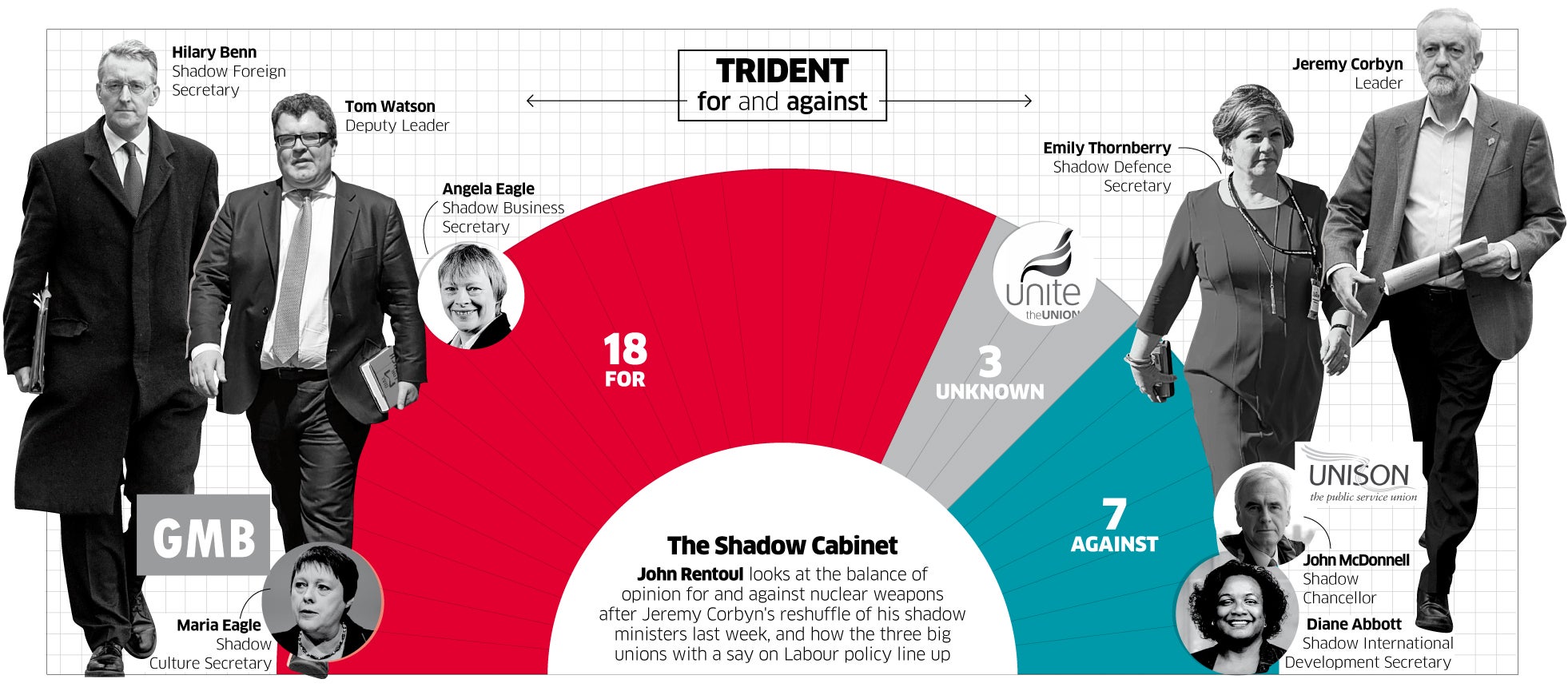Daily catch-up: Trident – how the shadow cabinet and National Executive line up
Jeremy Corbyn wants Labour's National Executive to seize power over policy so that he can change party policy on Trident nuclear weapons


Your support helps us to tell the story
From reproductive rights to climate change to Big Tech, The Independent is on the ground when the story is developing. Whether it's investigating the financials of Elon Musk's pro-Trump PAC or producing our latest documentary, 'The A Word', which shines a light on the American women fighting for reproductive rights, we know how important it is to parse out the facts from the messaging.
At such a critical moment in US history, we need reporters on the ground. Your donation allows us to keep sending journalists to speak to both sides of the story.
The Independent is trusted by Americans across the entire political spectrum. And unlike many other quality news outlets, we choose not to lock Americans out of our reporting and analysis with paywalls. We believe quality journalism should be available to everyone, paid for by those who can afford it.
Your support makes all the difference.This is the chart made by Henrik Pettersson, our graphics supremo, showing how the shadow cabinet divides on Trident nuclear weapons. Tom McTague, the Independent on Sunday's Political Editor, reported yesterday on Jeremy Corbyn's plan to bypass the shadow cabinet and give Labour's National Executive the power to decide policy. He and John McDonnell want to change Labour's policy to one of one-sided nuclear disarmament before the Government asks the House of Commons to vote on the question, and certainly by Labour Party conference in September.
Here are the rest of the names behind the numbers on the graphic (updated to take in Karl Turner replacing Catherine McKinnell as shadow attorney general):

And here is how the party's National Executive divides:

You can see why Corbyn would prefer the decision to be made by the National Executive rather than the shadow cabinet. You can also see the critical importance of Unite, the largest union, which has ambiguous policies of defending jobs in the defence industry while condemning nuclear weapons on moral grounds.
This is how the unions that are affiliated to the Labour Party line up (I missed Usdaw, the shop workers' union, in the Independent on Sunday graphic):

Showing numbers affiliated to Labour, which determine the size of delegations to Labour conference (figures in brackets show share of total vote at conference: the unions have 50 per cent and constituency parties 50 per cent.) The Fire Brigades Union has just reaffiliated to Labour and could affiliate its full 44,000 members. The GMB, which last year cut its affiliation, could increase it again to around 500,000.
When the question comes to party conference, Unite, which holds 12 per cent of the total vote at conference, is again likely to be decisive. Last year, Unite helped to block the question of Trident being reopened. This year, the constituency delegates are also likely to be more strongly opposed to Trident.
As someone said, the first thing you need to be able to do in politics is to count.
Join our commenting forum
Join thought-provoking conversations, follow other Independent readers and see their replies
Comments